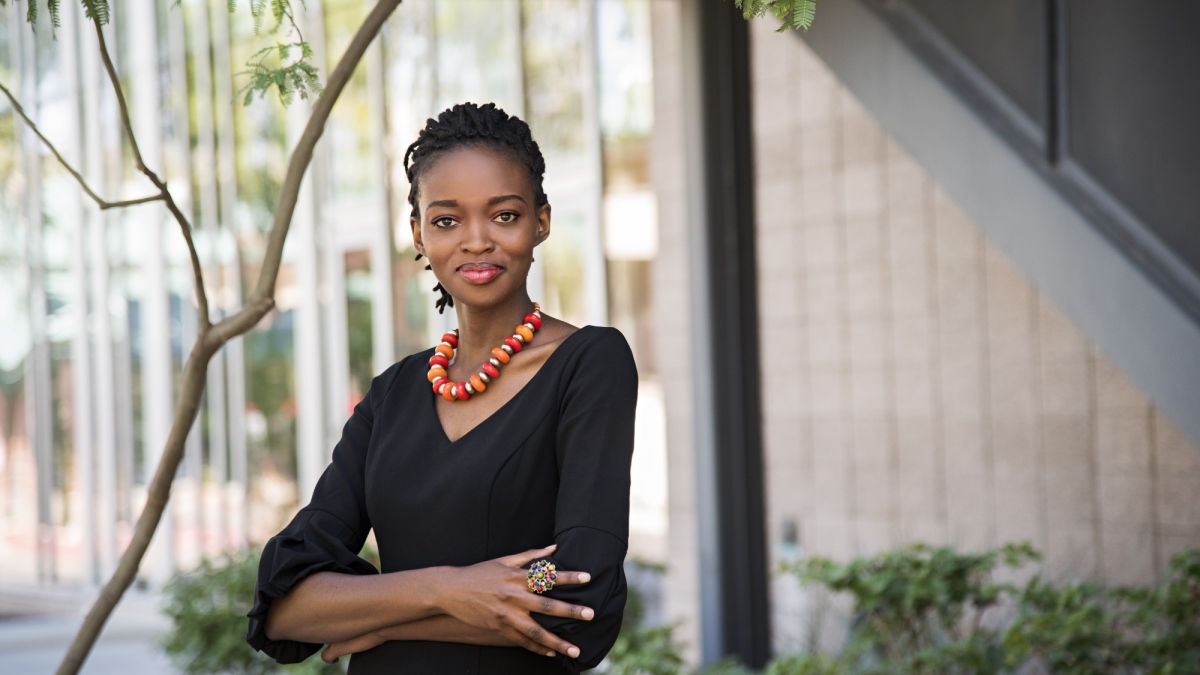Fascination with disease leads to a career solving health challenges with data

Joan Kwamboka
Editor’s note: This is part of a series of profiles for spring 2019 commencement.
Growing up in Nairobi’s Kibera slums, Joan Kwamboka’s daily life was routinely interrupted by communicable disease outbreaks. Flare-ups of malaria — the disease that Kwamboka would eventually call her “favorite” — meant that she couldn’t travel to the countryside during holidays or take school trips that involved large bodies of water.
While many in her community reacted with fear of these periodic epidemics, Kwamboka was fascinated. “I wanted to know how these diseases operated, why they affected people differently, why certain regions were associated with particular diseases, and, most importantly, why I couldn’t travel like others,” she said.
Her interest only grew once she entered high school, and it continued after she came to ASU as an undergraduate on a full-ride MasterCard Foundation scholarship. She majored in biological sciences and started focusing on malaria. It was during an internship at the Kenya Medical Research Institute Centre for Global Health Research that she had one of the most significant "aha" moments of her career.
The researchers were using computational methods to make connections between malaria, Epstein-Barr virus and Burkitt’s lymphoma.
“It was the first time I realized that data could be used to solve mysteries surrounding diseases,” she said, and when she returned to ASU, she learned about the biomedical informatics program and decided to pursue her master’s degree at the College of Health Solutions.
Question: What’s something you learned while at ASU — in the classroom or otherwise — that surprised you, that changed your perspective?
Answer: I learned that you can and should combine different fields to solve problems, and that you should share your ideas and seek input from others. For instance, I minored in fine art history in my undergraduate program because of my interest in the visual representation of ideas. In my quest to learn and share information about diseases, I see how health practitioners use visual representation to design technology systems that can communicate complex ideas to those who have little understanding of them.
Q: Why did you choose ASU?
A: I initially chose ASU for my undergrad because of my fascination with the physical landscape and desert climate. I thought I would pursue a degree in physical geography and document the different diseases and cultures of the world. However, I came across biological sciences and the option to concentrate in genetics, cells and developmental biology which appealed to my goal of understanding and contributing to the discourse of diseases. When I looked at graduate schools and talked to professors about my interests, I knew ASU was the right choice still.
Q: Which professor taught you the most important lesson while at ASU?
A: My master’s adviser, Anita Murcko, taught me that being a leader and service provider is to listen, ask for constructive feedback and constantly improve based on the feedback. We have worked together for two years, introducing students to clinical informatics, and we give great importance to student feedback. The clinical informatics course was previously offered at the graduate level only, but we have refined it to a level that undergraduates can participate in because we take their feedback into consideration.
Q: What’s the best piece of advice you’d give to those still in school?
A: Broaden your horizons. Constantly look at the big picture and ask for help when necessary. If possible, identify a need and learn how you can contribute with your unique skill set.
Q: What was your favorite spot on campus, whether for studying, meeting friends or just thinking about life?
A: During the day, I loved the third floor of Noble Library. It’s a quiet place with plenty of natural light, and the view outside is just gorgeous. In the early evening, my favorite spot was by the MU North Stage where the light changes to amazing shades, and there is always music playing in the background on weekdays. And Sparky’s Den was also a favorite. I loved that I could play a game or two in between classes with random students.
Q: What are your plans after graduation?
A: I’ll be working with data, designing informatics content for undergraduates and preparing for medical school. I want to use the informatics concepts I have learned in my program and integrate informatics with a clinical practice career.
Q: If someone gave you $40 million to solve one problem on our planet, what would you tackle?
A: I would fund research and projects to accelerate diagnosis for both common and rare diseases. It is complex and painful already that some people suffer more than others. Expediting their diagnoses is a worthy cause that will help patients’ care teams, save money and increase our understanding if there are multiple diseases involved.
More Science and technology

ASU at the heart of the state's revitalized microelectronics industry
A stronger local economy, more reliable technology, and a future where our computers and devices do the impossible: that’s the…

Breakthrough copper alloy achieves unprecedented high-temperature performance
A team of researchers from Arizona State University, the U.S. Army Research Laboratory, Lehigh University and Louisiana State…

4 ASU researchers named senior members of the National Academy of Inventors
The National Academy of Inventors recently named four Arizona State University researchers as senior members to the prestigious…

